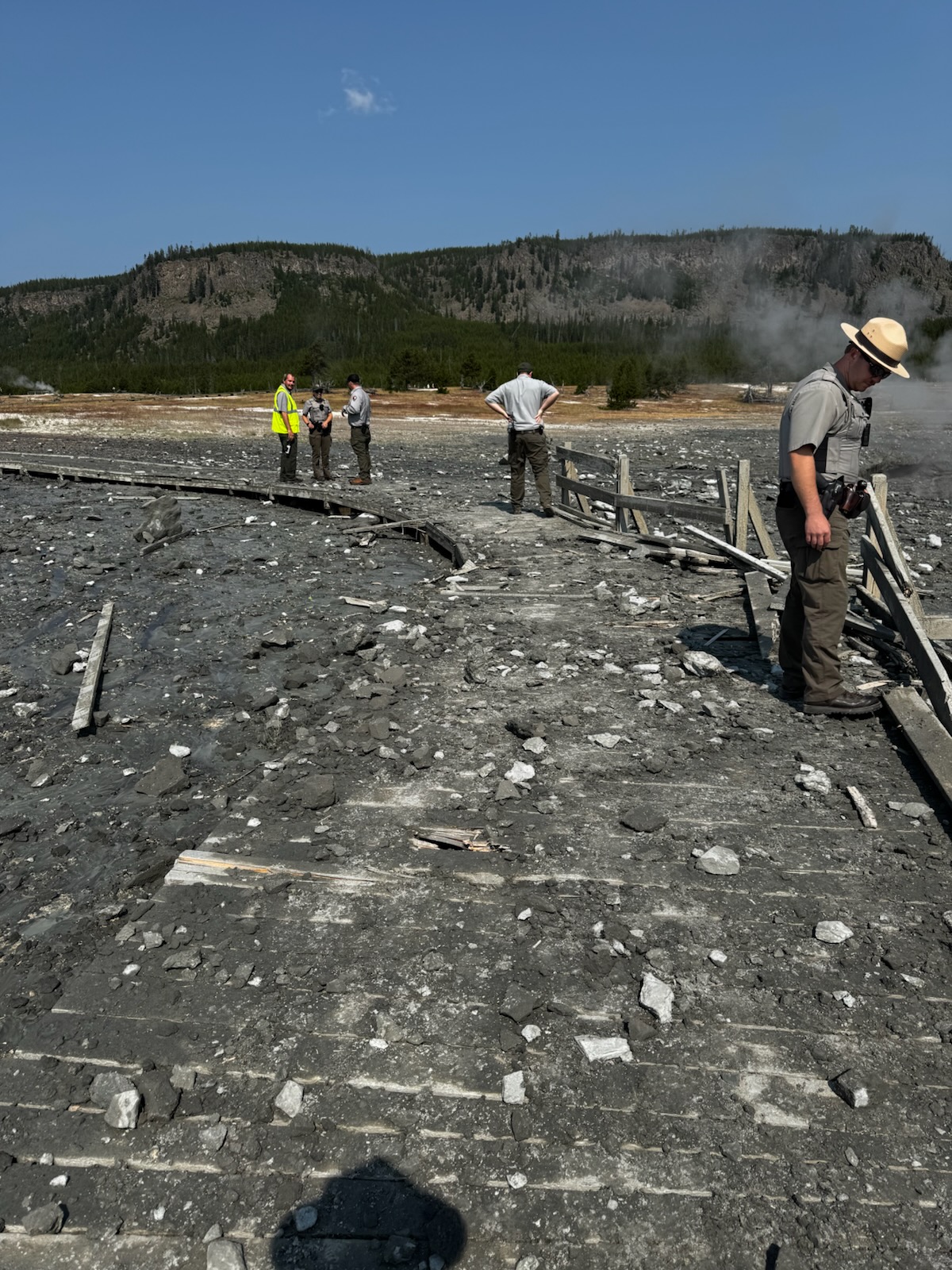Watch a Yellowstone Hot Spring Explode Into a Boiling Column of Mud, Water and Rock
Hydrothermal explosions typically occur every year in the popular national park, but rarely in areas so heavily trafficked by visitors
:focal(1588x1195:1589x1196)/https://tf-cmsv2-smithsonianmag-media.s3.amazonaws.com/filer_public/6a/11/6a11e9c5-dd53-41e0-8d23-e1bf786686a4/2009biscuitbasin.jpg)
Visitors at Yellowstone National Park ran for safety on Tuesday when, without warning, a strand of steam rising from the ground erupted into a dark column of boiling water, mud and rocks. The spectacular—if dangerous—phenomenon, called a hydrothermal explosion, destroyed part of a boardwalk where dozens of tourists had been hiking.
Vlada March had been taking a tour in the park when the guide pointed out the initial plume of steam, calling it unusual. She took out her phone and started recording.
“We saw more steam coming up, and within seconds it became this huge thing,” March says to Mead Gruver, Amy Beth Hanson and Matthew Brown of the Associated Press. “It just exploded and became like a black cloud that covered the sun.”
She tells the New York Times’ Annie Correal that once the eruption began, she yelled for her two young sons to run. When she spotted her 70-year-old mother, March tells the publication, “she was covered in ash, head to toe.”
The dramatic scene unfolded around 10:19 a.m. at Biscuit Basin, a popular boardwalk hike just a few miles north of the famous Old Faithful geyser. Biscuit Basin is temporarily closed as geologists investigate the event.
Yellowstone National Park, a destination for more than four million visitors annually, sits atop a volcanic hotspot that has periodically burst with super-eruptions. During the past 2.1 million years, the hotspot was active around the park, producing three large eruptions with about 600,000 to 800,000 years between each. The most recent super-eruption was 631,000 years ago, and the last non-explosive lava flows broke out 70,000 years ago.
It’s this volcanic activity that brings geothermal heat near the surface in the park, causing the hot springs and other hydrothermal features that make Yellowstone famous. But this week’s hydrothermal explosion wasn’t due to volcanic magma, and it does not indicate any higher risk that the dormant supervolcano will become active anytime soon.
“If it were due to magma that was rising up underneath the ground, we would see really spectacular changes,” Michael Poland, the scientist-in-charge at USGS’s Yellowstone Volcano Observatory says to Noah Haggerty of the L.A. Times. “There would be earthquakes galore and ground deformation. It wouldn’t be a single feature that had an explosion—there would be changes all over the place.”
/https://tf-cmsv2-smithsonianmag-media.s3.amazonaws.com/filer_public/e6/c6/e6c6eb0d-b625-4b7b-9457-960bb8674d04/biscuit_basin.jpeg)
Instead, the recent hydrothermal explosion is likely due to changes in the underground plumbing system of hot water and steam in the area, as meteorologist Stephanie Abrams tells CBS News.
“When the pressure rapidly drops in a localized spot, it actually forces the hot water to quickly turn to steam, triggering a hydrothermal explosion since gas takes up more space than liquid,” Abrams tells the publication. “And this explosion can rupture the surface, sending mud and debris thousands of feet up and more than half a mile out in the most extreme cases.”

While this explosion was nowhere near as big as the worst-case scenario could have been—and no injuries have been reported—it’s a reminder of the dangers inherent to such a geothermally active area. Such events can occur in Yellowstone several times per year, but they’re often in the backcountry where visitors are far less likely to travel, according to a National Park Service statement. On May 17, 2009, a similar explosion to the one this week occurred in Biscuit Basin, and another happened in the park’s Norris Geyser Basin in April.
Marianne Karplus, a geophysicist at the University of Texas El Paso, tells NPR that the park is investing in instrumentation that might help provide warning about hydrothermal explosions in the future. But in the meantime, “these types of events are very hard to predict or hard to anticipate. And so that’s why in this case this morning, as well as in 2009 and other times that this has happened, it’s been a total surprise.”